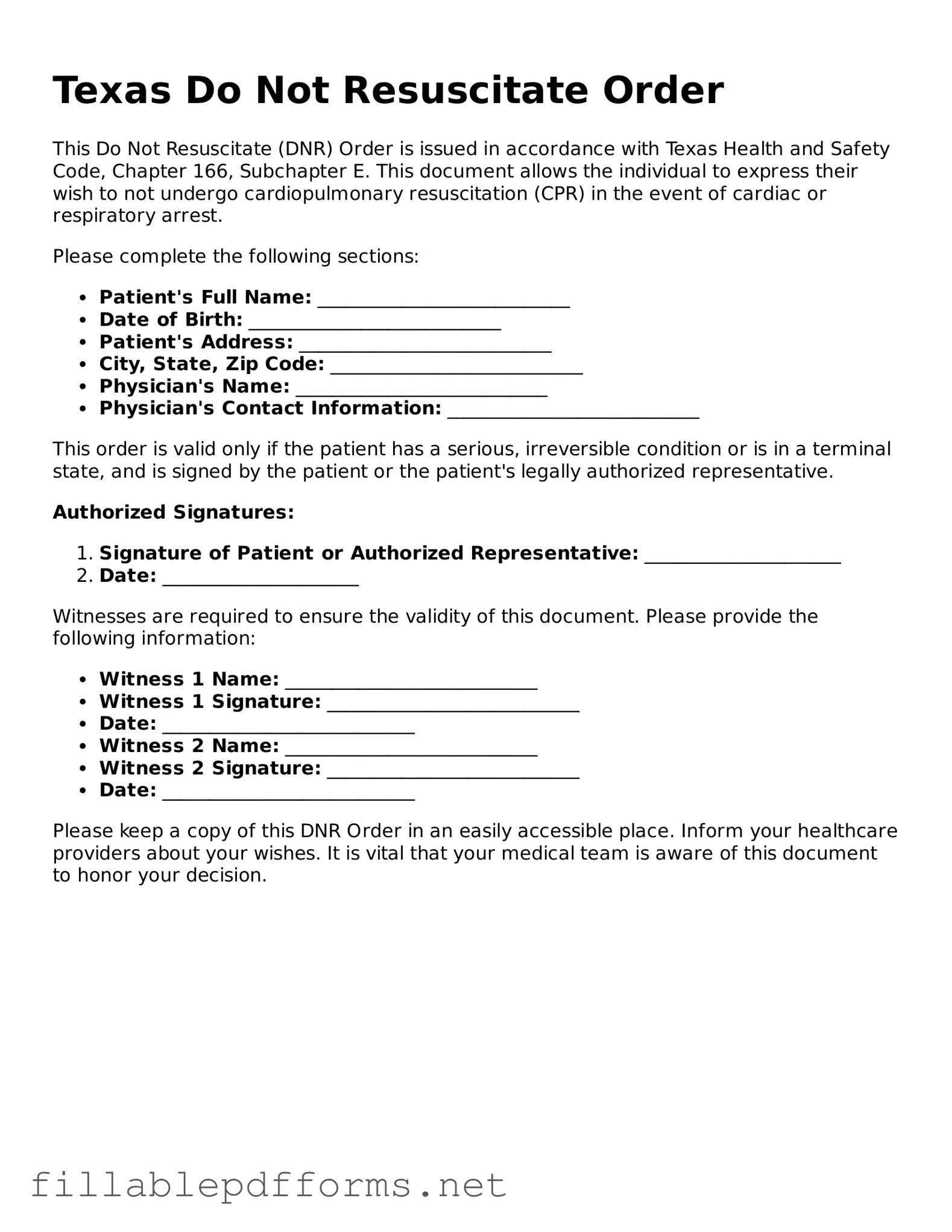Attorney-Verified Do Not Resuscitate Order Form for Texas State
A Texas Do Not Resuscitate Order (DNR) form is a legal document that allows individuals to refuse resuscitation efforts in the event of cardiac or respiratory arrest. This form ensures that a person's wishes regarding end-of-life care are respected by medical personnel. Understanding the implications and proper use of the DNR form is essential for both patients and their families.
Launch Editor Here
